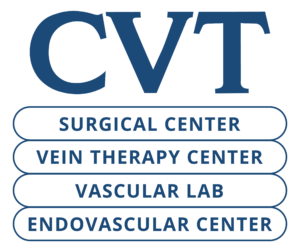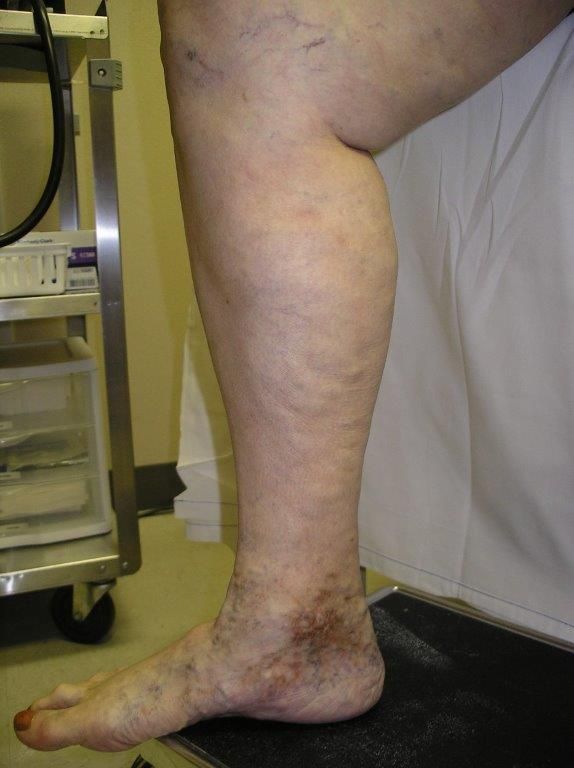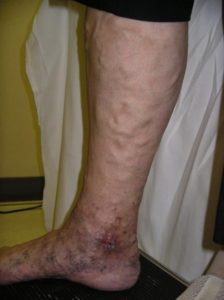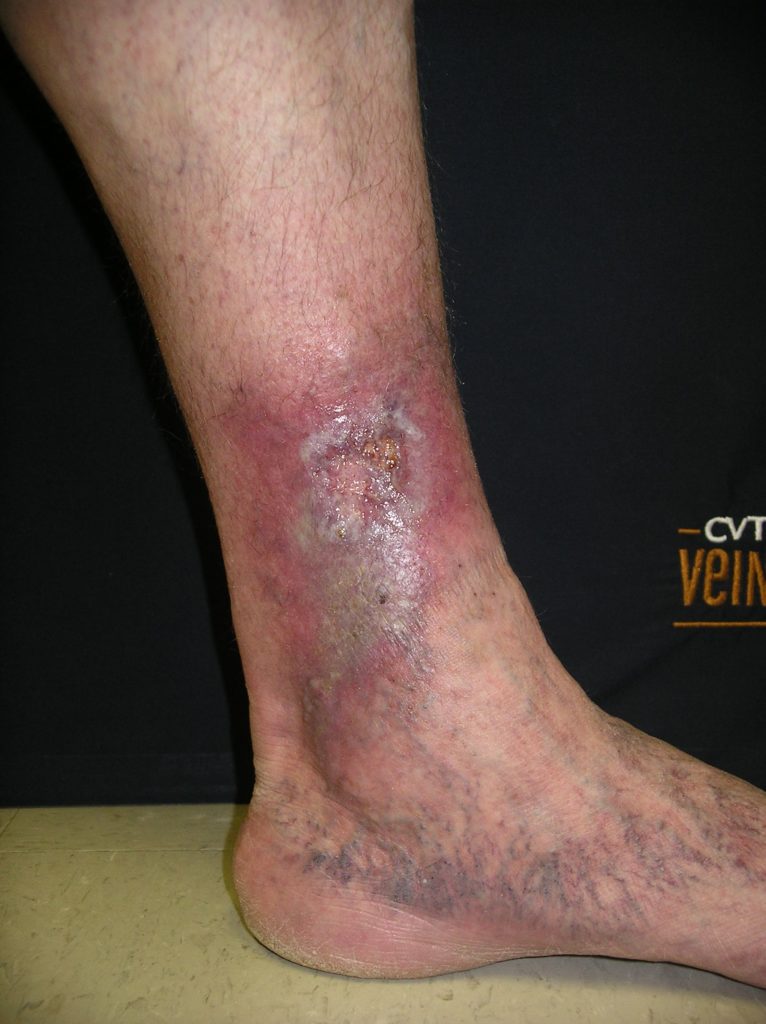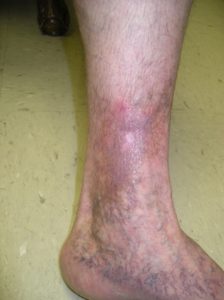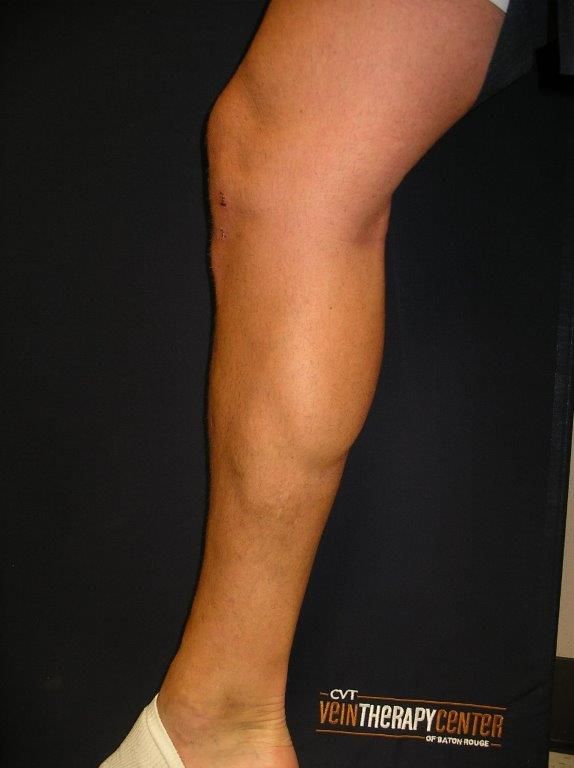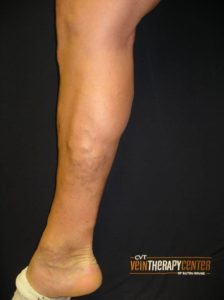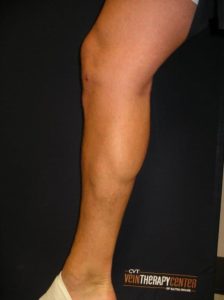How Does Radiofrequency Ablation Work?
ClosureFast™ or VENCLOSE™ procedures use radiofrequency energy to precisely and effectively treat patients suffering from Chronic Venous Insufficiency (CVI). With less pain and bruising than alternative treatments, physicians can feel confident that a better patient experience is part of every ClosureFast™ or VENCLOSE™ procedure.
ClosureFast™ and Venclose procedures are minimally invasive segmental radiofrequency ablation (RFA) treatments that utilize radiofrequency energy to provide an even and uniform heat to contract the collagen in the vein walls, causing them to collapse and seal. Once a leg vein is closed, blood flow is redirected to healthy veins.
These procedures allow for a quick, comfortable recovery and a return to everyday activities while also improving the appearance of varicose veins.
Want to look and feel better? Learn more about our vein treatment services today, call our Baton Rouge office at 225-766-0416, or toll free 800-375-0416. Your first consultation with us is absolutely free!
Self-Assessment: Are You a Candidate for ClosureFast™ or VENCLOSE™ Treatment?
What Conditions Can ClosureFast™ or VENCLOSE™ Treat?
If you answer yes to one or more of the following questions, please contact us today at 225-766-0416 for a consultation.
- Have you ever had varicose veins?
- Do you experience leg pain, aching or cramping?
- Do you experience leg or ankle swelling, especially at the end of the day?
- Do you feel “heaviness” in your legs?
- Do you experience restless legs?
- Do you have skin discoloration or texture changes?
- Do you have open wounds or sores?
- Has anyone in your blood-related family ever had varicose veins or been diagnosed with venous reflux disease or chronic venous insufficiency?
- Have you had any treatments of procedures for vein problems?
- Do you stand for long periods of time, such as at work?
Frequently Asked Questions About Radiofrequency Ablation
-
1. What is RFA targeted endovenous therapy?
1. What is RFA targeted endovenous therapy?
The ClosureFast™ or VENCLOSE™ procedure is a minimally invasive treatment option that uses radiofrequency (RF) energy to effectively treat patients suffering from varicose veins or chronic venous insufficiency (CVI). A vein specialist inserts the ClosureFast™ or VENCLOSE™ catheter into the diseased vein to provide consistent and uniform heat to contract the collagen in the vein walls, causing them to shrink and seal closed. Once the diseased vein is closed, blood will re-route itself to other healthy veins. -
2. How is ClosureFast™ different from the ClosureFast Closure procedure?
2. How is ClosureFast™ different from the ClosureFast Closure procedure?
The ClosureFast™ procedure is just a new name for the ClosureFast Closure procedure, providing the same clinically proven results with the same great patient recovery profile. The ClosureFast™ and VENCLOSE™ procedures both use RFA to target diseased veins. VENCLOSE™ procedures use updated technology with smaller catheters, and dual heating lengths to reduce in-vein time by up to 30% over ClosureFast™. -
3. How is RFA different from vein stripping?
3. How is RFA different from vein stripping?
During vein stripping, incisions are made in the groin and calf, and a tool is threaded through the diseased vein to pull the vein out of the leg. With RFA, only one small incision is made at the insertion site and the vein is then treated and left in place. This minimally invasive approach reduces the likelihood of pain and bruising. -
4. How is RFA different from endovenous laser?
4. How is RFA different from endovenous laser?
Although RFA and endovenous laser ablation are both minimally invasive procedures, a comparative, multi-center study showed that RFA with ClosureFast™ or VENCLOSE™ was associated with statistically significant lower rates of pain, bruising and complications. Patients undergoing the ClosureFast™ or VENCLOSE™ procedure also reported improvements in quality of life measures up to four times faster than patients treated with endovenous laser ablation. -
5. How long does an RFA procedure take?
5. How long does an RFA procedure take?
An RFA procedure takes approximately 45-60 minutes, although patients may normally spend 2-3 hours at the medical facility due to normal pre- and post-treatment procedures. -
6. Is an RFA procedure painful?
6. Is an RFA procedure painful?
Most patients report feeling little, if any, pain during an RFA procedure. Your physician should give you a local or regional anesthetic to numb the treatment area. -
7. Does an RFA procedure require anesthesia?
7. Does an RFA procedure require anesthesia?
The ClosureFast™ or VENCLOSE™ procedure is usually performed under local or regional anesthesia. It is generally performed in a vein specialist’s office or an outpatient surgical facility. -
8. How quickly after treatment can I return to normal activities?
8. How quickly after treatment can I return to normal activities?
Patients treated with the ClosureFast™ or VENCLOSE™ procedure may resume normal activities more quickly than patients who undergo surgical vein stripping or endovenous laser ablation. After treatment with an RFA procedure, the average patient typically resumes normal activities within a few days. For a few weeks following the treatment, your physician may recommend a regular walking regimen and suggest you refrain from very strenuous activities (heavy lifting, for example) or prolonged periods of standing. -
9. How soon after treatment will my symptoms improve?
9. How soon after treatment will my symptoms improve?
Most patients report a noticeable improvement in their symptoms within 1-2 weeks following the procedure. -
10. Is there any scarring, bruising or swelling after an RFA procedure?
10. Is there any scarring, bruising or swelling after an RFA procedure?
Patients report limited to no scarring, bruising or swelling following a ClosureFast™ or VENCLOSE™ procedure. -
11. What potential risks and complications are associated with an RFA procedure?
11. What potential risks and complications are associated with an RFA procedure?
As with all medical procedures, potential risks and complications exist, including vessel perforation (when the catheter punctures the vein wall), thrombosis, pulmonary embolism (when a blood clot travels to the lungs), phlebitis (inflammation of the vein), infection, nerve damage, arteriovenous fistula (an abnormal connection between an artery and a vein), hematoma (bruising), and skin burn. As with all medical procedures, consult your physician to understand the risks and benefits of the procedure. -
12. Are the ClosureFast™ and VENCLOSE™ procedures suitable for everyone?
12. Are the ClosureFast™ and VENCLOSE™ procedures suitable for everyone?
Only a vein specialist can tell you if the ClosureFast™ or VENCLOSE™ procedure is the right option for your vein problem. Experience has shown that many patients with varicose veins or CVI can be treated with the ClosureFast™ and VENCLOSE™ procedures. -
13. Is age an important consideration for the ClosureFast™ or VENCLOSE™ procedures?
13. Is age an important consideration for the ClosureFast™ or VENCLOSE™ procedures?
The most important step in determining whether or not the ClosureFast™ or VENCLOSE™ procedure is appropriate for you is a complete ultrasound examination by your vein specialist. Age alone is not a factor in determining whether or not these procedures are appropriate for you. These procedures have been used to treat both women and men across a wide range of ages. -
14. How effective are the ClosureFast™ and VENCLOSE™ procedures?
14. How effective are the ClosureFast™ and VENCLOSE™ procedures?
The ClosureFast™ procedure has been shown in a large international, multi-center study to be 93% effective over three years. -
15. Are RFA procedures covered by my insurance?
15. Are RFA procedures covered by my insurance?
Many insurance companies pay for the ClosureFast™ and VENCLOSE™ procedures in part or in full. Please discuss your coverage with your insurance provider prior to seeking treatment.
